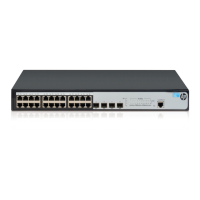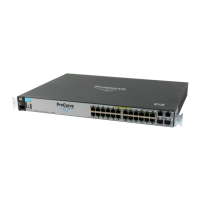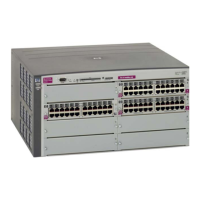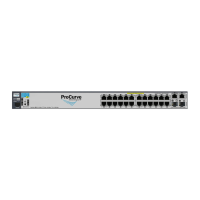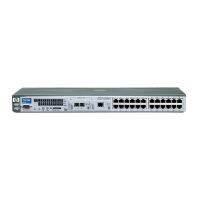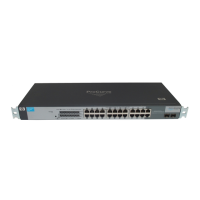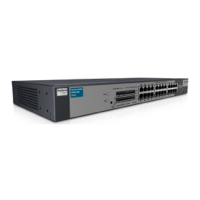Configuration Commands 136
Remote Monitoring configuration
Remote Monitoring (RMON) allows you to monitor traffic flowing through the switch. The RMON MIB is described in
RFC 1757.
The following table describes the RMON Configuration commands.
Table 164 RMON commands
Command Description
show rmon Displays the current RMON configuration.
Command mode: All
RMON history configuration
The following table describes the RMON History commands.
Table 165 RMON History commands
Command Description
rmon history <1-65535> interface-oid
<1-127 characters>
Configures the interface MIB Object Identifier. The IFOID must
correspond to the standard interface OID, as follows:
1.3.6.1.2.1.2.2.1.1.x
The interface OID can have a maximum of 127 characters.
Command mode: Global configuration
rmon history <1-65535> requested-
buckets <1-65535>
Configures the requested number of buckets, which is the number
of discrete time intervals over which data is to be saved.
The range is from 1 to 65535. The default is 30.
Command mode: Global configuration
NOTE: The maximum number of buckets that can be granted is 50.
rmon history <1-65535> polling-
interval <1-3600>
Configures the time interval over which the data is sampled for
each bucket.
The range is from 1 to 3600 seconds. The default value is 1800
seconds.
Command mode: Global configuration
rmon history <1-65535> owner <1-127
characters>
Enter a text string that identifies the person or entity that uses this
history index.
The owner can have a maximum of 127 characters.
Command mode: Global configuration
no rmon history <1-65535>
Deletes the selected history group.
Command mode: Global configuration
show rmon history
Displays the current RMON History parameters.
Command mode: All
RMON event configuration
The following table describes the RMON Event commands.
Table 166 RMON Event commands
Command Description
rmon event <1-65535>
description <1-127 characters>
Enter a text string to describe the event.
The description can have a maximum of 127 characters.
Command mode: Global configuration
rmon event <1-65535> type
<log|trap|both>
Selects the type of notification provided for this event. For log events, an
entry is made in the log table and sent to the configured syslog host. For
trap events, an SNMP trap is sent to the management station.
Command mode: Global configuration

